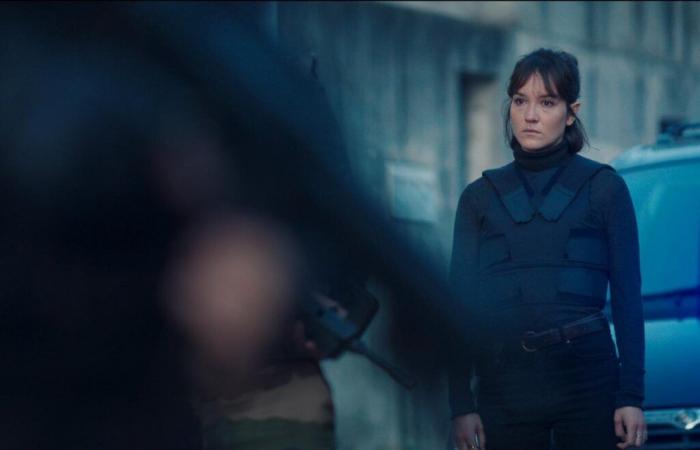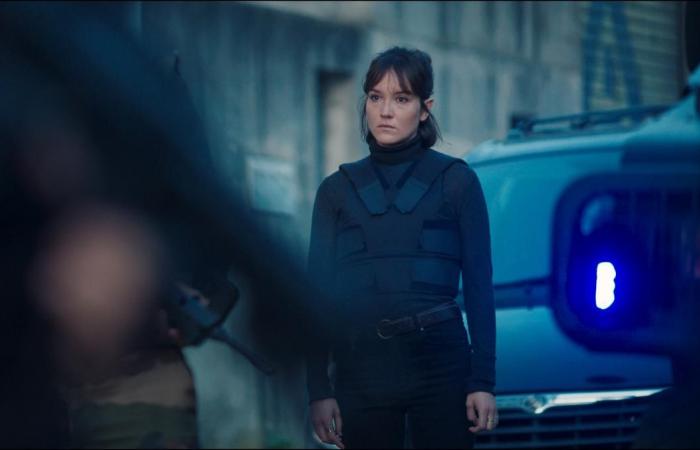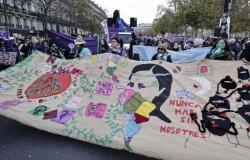Cédric Jimenez, Alice Winocour and Kilian Riedhof did it… Three directors released films inspired by the attacks of November 13, 2015. Deciphering five of their methods for depicting the unrepresentable.
Anaïs Demoustier in “November”, by Cédric Jimenez (2022). Récifilms and Chi-Fou-Mi productions
By Michel Bezbakh
Published on November 3, 2024 at 5:47 p.m.
Updated November 3, 2024 at 5:51 p.m.
Sseven years after the night of horror of November 13, 2015, and two months after the end of the trial of those still alive, three films more or less directly inspired by the terrorist attacks at the Bataclan, the Stade de France and on the Parisian terraces, were released in theaters. Always with the same challenge: talking about them without showing them. This is how these works, but also the precursor Amanda (2018) or even Come I'll take you (2022), wield the art of dodging.
By moving the subject
Is it because there is nothing to prove about the barbarity of these attacks? All the films take the attacks as a starting point in order to explore something else. Amanda, de Mikhaël Hers, a 2018, et You won't have my hatredby Kilian Riedhof, observe the reconstruction of the victims' loved ones. See Paris againby Alice Winocour, focuses on the survivor of a shooting who has lost her memory and seeks to remember the event. Novemberby Cédric Jimenez, reconstructs the hunt for the terrorists of November 13, and emphasizes the exhausting work of the investigators. Come I'll take youby Alain Guiraudie, probes the paranoia that grips a city at the time of the events. Note also that the first season ofIn therapy (2020) deals with the psychological consequences of November 13 on a small Parisian microcosm.
By replacing the sound of bullets with telephone ringtones
When asked if he thought about showing the attacks, Cédric Jimenez is categorical: ” Never. I would have found it obscene, truly obscene… If I had read the slightest effect in this sense [dans le scénario], I would never have made the film. » (1). November However, it begins on the evening of November 13, in the streets of Paris. A jogger runs along the banks of the Seine, the bars are connected to France/Germany, an anti-terrorist police officer follows the match on his computer. We won't hear the bullets but the phone ringing. One, then two, then dozens: a police officer (Jérémie Renier) tries to answer the calls but it quickly becomes impossible, he is already underwater and will take five days to come out.
It is also the telephone which is a trigger in You will not have my hatred, the true story of Antoine Leiris (played by Pierre Deladonchamps), whose wife died at the Bataclan. We see him babysitting his son, reading him a story, going out to buy cigarettes, trying to read a book in bed while waiting for his partner, and starting to worry when friends text him to see if he is safe . So he turns on the TV, watches the news and makes more phone calls.
By inventing a fictitious attack
All French filmmakers agree on the impossibility of reconstructing these horrors. ” Besides [présent au Bataclan la nuit du drame, ndlr] made me understand that there was something of the order of the unrepresentable”, confides Alice Winocour. See Paris again is therefore revolved around a fictitious attack, in a Parisian brasserie.
Mikhaël Hers invented a shooting in the Bois de Vincennes to Amanda. Inevitably, these are the two films which show the most things. In Amanda, the brother of a victim (Vincent Lacoste) arrives just after the tragedy, and the camera moves to some of the bloodied bodies.
See Paris again places us at the heart of the carnage. We lie on the ground, under a table, and we pray that the attacker will take us for dead. It's daring, violent, but the rest of the film will never stop reexamining these memory images, suggesting the idea that it is a post-traumatic reconstitution of the heroine, played by Virginie Efira. In the end, maybe we didn't see anything there either.
Finally, Alain Guiraudie also imagined a fictitious attack, in Clermont-Ferrand, in Come I'll take you, but his case is different: he has chosen the comic register, and we will see nothing other than the contradictory information from the TV channels.
By changing your point of view
We think of the anathema cast by Claude Lanzmann on the representation of the death camps: cinema can only approach such monstrosities by taking a step aside. Is this modesty Franco-French? The killing perpetrated by the Norwegian Anders Breivik on July 22, 2011 was meticulously reconstructed by the American Paul Greengrass seven years later in July 22, Netflix movie. The same Greengrass, who comes from journalism, had in 2006 reconstructed one of the plane hijackings of September 11, 2001 in Vol 93. Also in 2006, Oliver Stone came out World Trade Center. This fiction about the intervention of the police forces on the day of the tragedy showed the towers in flames, and even went so far as to film the suicide of a man who threw himself into the void. For now, it must be said that these images, the real ones, have gone around the world. Of the shootings of November 13, only a short video of the Bataclan remains, when the first shots replace the musical notes.
This video, which can be found on the Internet, is viewed by the character Antoine Leiris in You won't have my hatred. German director Kilian Riedhof chooses to show it to us, until Antoine violently closes his computer when he hears the sound of bullets. His film is clearly the one that comes closest to the massacre, even if it cautiously tries to take a slight distance: “Our film shows the point of view of a man whose wife was murdered. » Except that's not quite it. It is not just any man and child, as in Amanda. It is Antoine Leiris and his son who are represented. However, it becomes obvious, from the first image, that the cinema cannot live up to this story. A film cannot achieve the intensity of the grief of this man (who simply met the authors and gave his approval without participating in the project).
By finding an outlet
Between fiction and reality, November stands on a very tight rope, and tries to keep his balance by injecting small doses of both. There is certainly Blaise Matuidi shot during the France / Germany, François Hollande's speech, the television news, the photos of the terrorists, but the investigation has been simplified, and the agents of the anti-terrorist police are fictional characters . “It was obviously necessary not to reveal what could be detrimental to this service and to the judicial investigation,” Jimenez justifies.
Finally, the scene most modeled on reality is perhaps the assault on the Saint-Denis apartment where Abaaoud is hiding. The whole film converges towards this climax, which “replaces”, in some way, the attacks. A long and very impressive scene, filmed both from the point of view of the Raid agents and that of the investigators who remained outside the building (never the terrorists), and whose raison d'être is not questioned. Not sure that Jimenez asked himself the question: this violence, according to him, is obviously representable.
Article published on November 11, 2022







